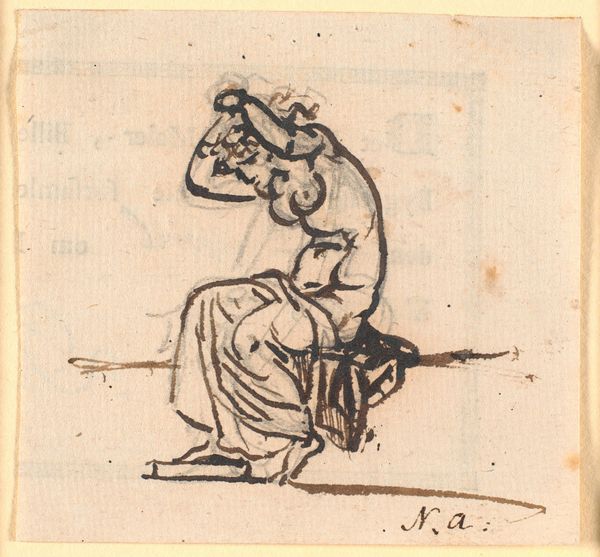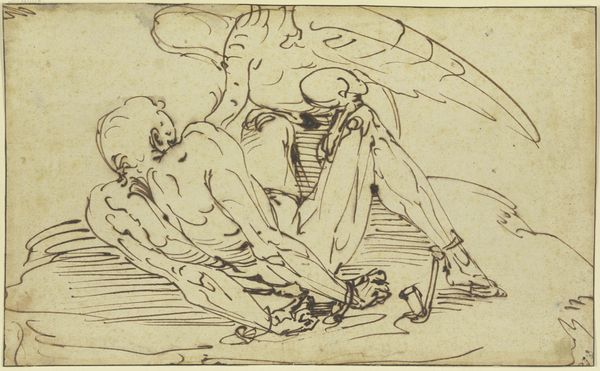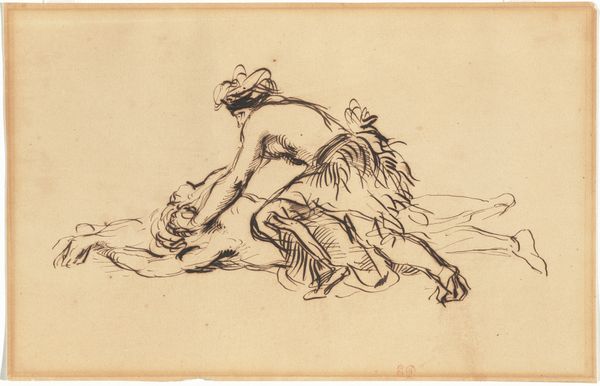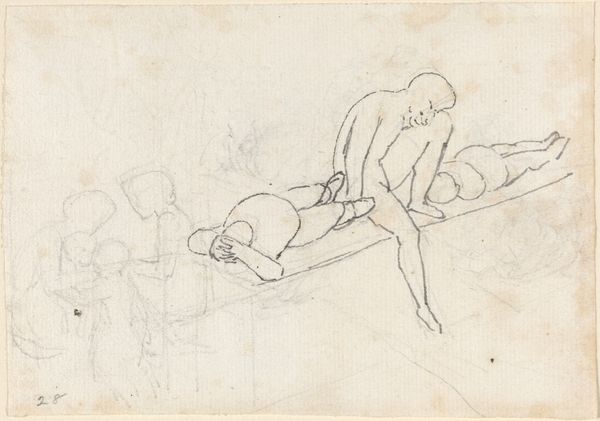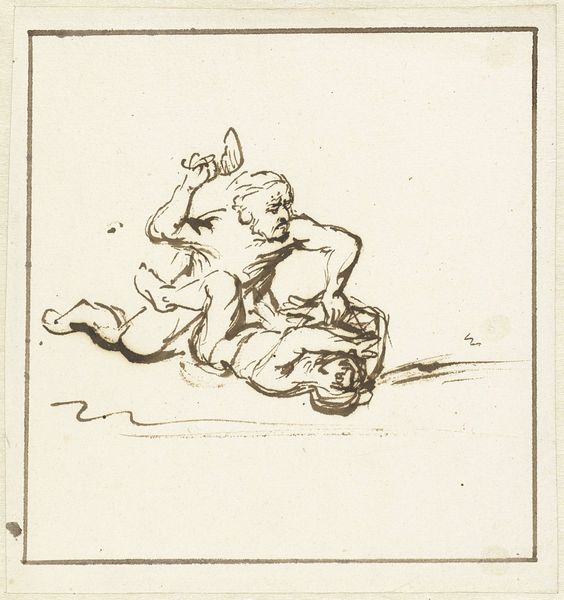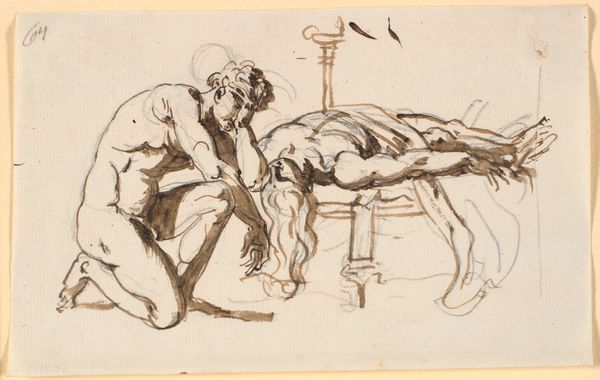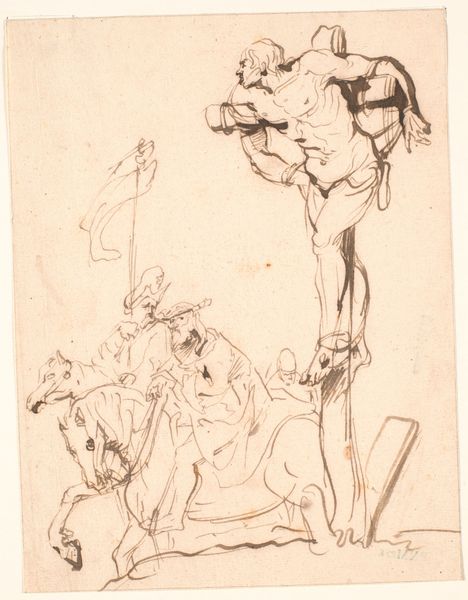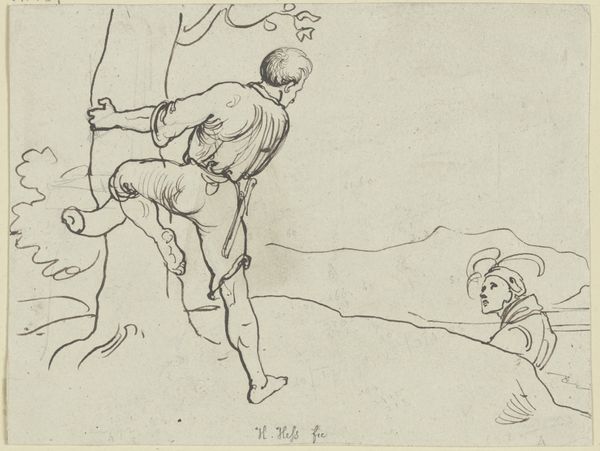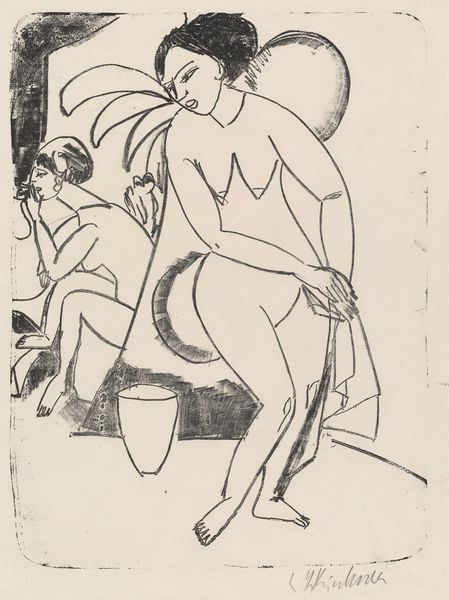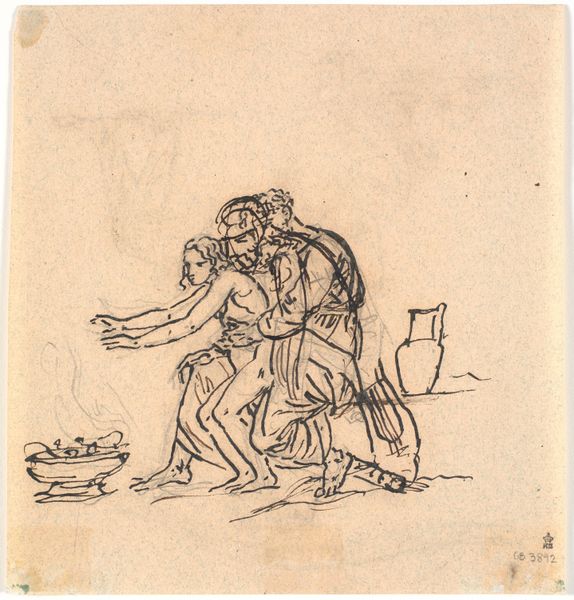
En siddende nøgen figur, der svinger riset mod en nøgen kvindes bag 1743 - 1809
0:00
0:00
drawing, ink, pen
#
drawing
#
ink drawing
#
pen illustration
#
pen sketch
#
figuration
#
ink
#
pen
#
genre-painting
#
erotic-art
Dimensions: 96 mm (height) x 144 mm (width) (bladmaal)
Curator: This ink drawing by Nicolai Abildgaard, made sometime between 1743 and 1809, is titled "En siddende nøgen figur, der svinger riset mod en nøgen kvindes bag" - "A seated nude figure brandishing a birch against a nude woman's behind." It's currently held at the SMK, the National Gallery of Denmark. Editor: My first impression is… dynamic, certainly. It’s a sketch, quite sparse, but there's a real sense of implied motion and violence, though also something performative. The stark lines amplify the tension. Curator: It is quite interesting viewed through the lens of 18th-century social mores, particularly the interplay between societal expectations and artistic license. How might such a piece have been received, considering the norms surrounding the female nude and the representation of corporal punishment? Editor: Well, on one hand, there is that ever-present theme of power dynamics being played out through violence and domination. But I think there's also a strong connection to theatricality in the iconography. Ritualized combat, perhaps a symbolic expiation of something... maybe guilt? That upraised hand is so classically tragic. Curator: The classical allusion is important, especially given Abildgaard’s preoccupation with neo-classicism. However, this diverges quite significantly. What does this tell us about Abildgaard’s personal engagement with this classicism when put in service of, perhaps, darker themes? Editor: Perhaps it is that darkness that fascinated Abildgaard, challenging the pristine visions of the classical age, almost probing for what was always lurking in its shadows: violence, eroticism, a sense of underlying instability. This scene is no celebration of virtue; it almost reads as a critique of enforced morality. Curator: Interesting perspective, to frame it as a critique rather than simple titillation. It forces one to question whether the act depicted is simply carnal, or if Abildgaard intended something more complex, given the intellectual ferment of his time. The role of the art institutions then become paramount. How did such art negotiate spaces of elite culture, while possibly being viewed by audiences with diverse value sets? Editor: It certainly provides fuel to unpack those ambiguities that lay hidden beneath official decorum and ideal narratives that art would be supposed to uphold. The emotional turmoil is rendered stark and vivid and raises questions that perhaps do not find comfortable answers. Curator: Indeed. Seeing it today allows us to re-examine art's relationship to cultural norms. Editor: Precisely. These sketches provide crucial insight into artists’ challenges of dominant motifs and values.
Comments
No comments
Be the first to comment and join the conversation on the ultimate creative platform.
